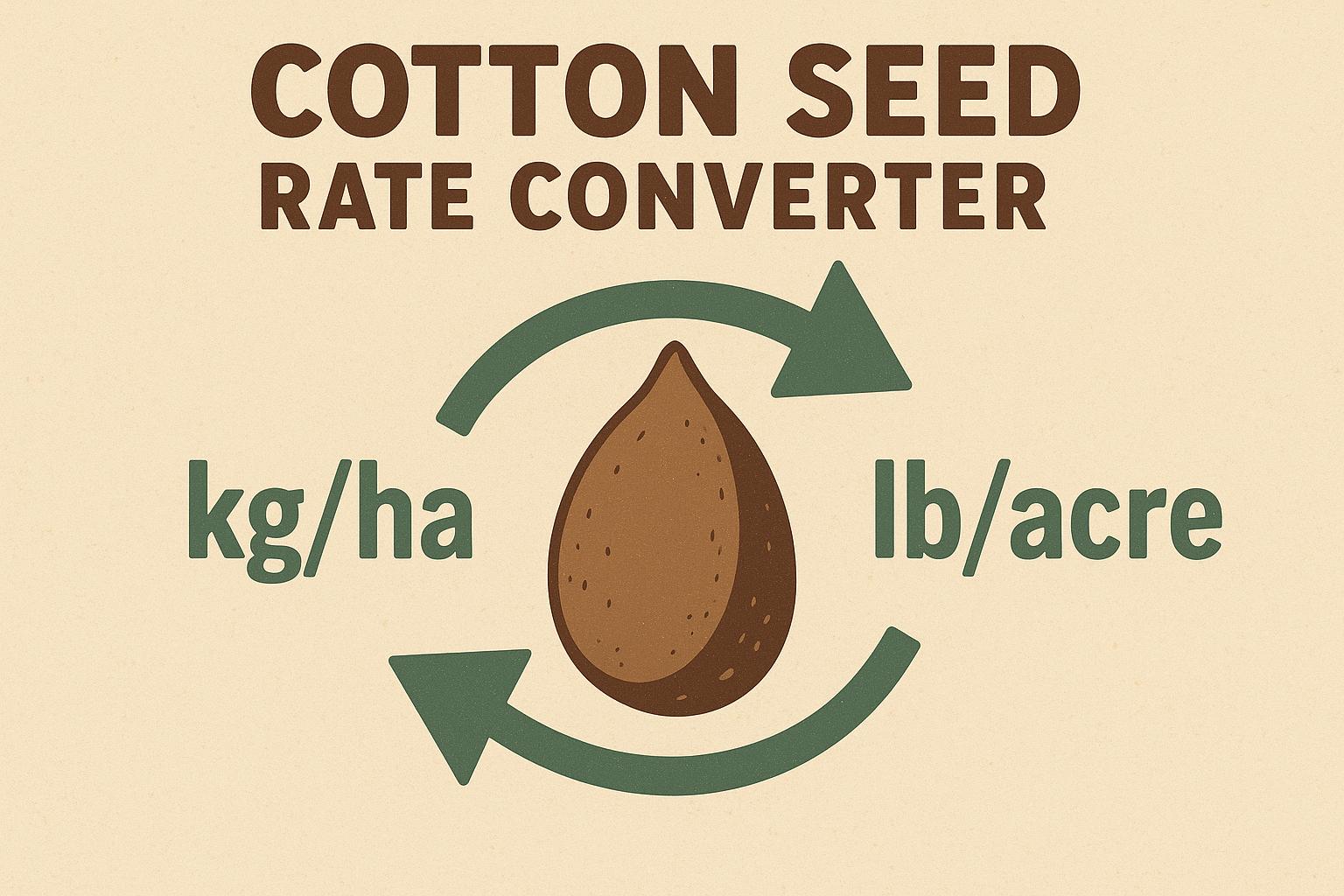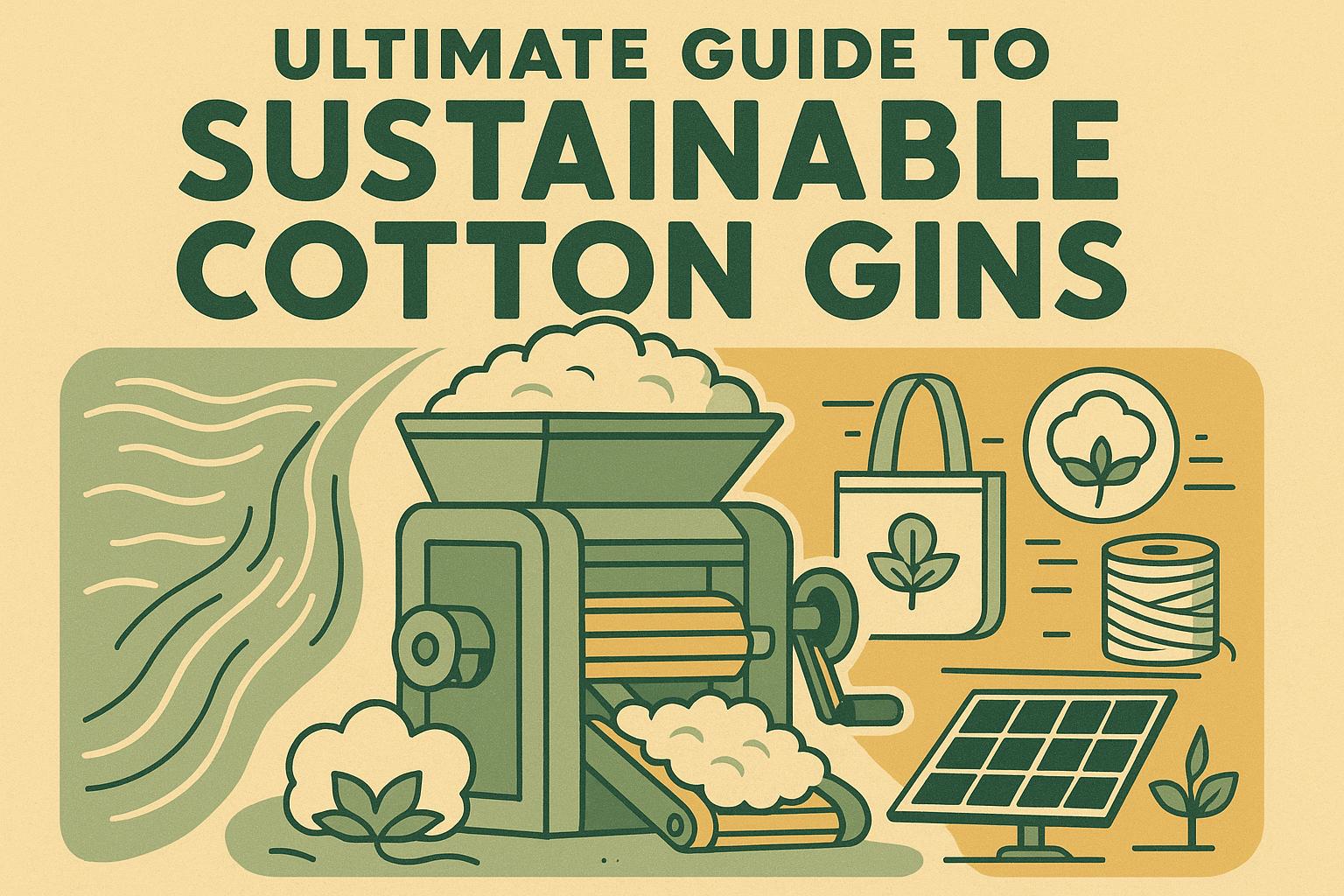Executive summary (TL;DR)
- Follow the cotton yarn manufacturing process from cleaning raw lint to final winding—each step maximizes cotton's natural strength and breathability for durable, premium yarn.
- Carding and drawing align fibers for uniformity; cotton's crimp creates softer, more absorbent yarn than plastic synthetics that pill and pollute.
- Spinning and finishing produce market-ready yarn; cotton's hypoallergenic, biodegradable nature commands 10-20% premiums over plastic alternatives in eco-conscious markets.
Related Post: For related fiber insights, check out our post on Maximizing Cotton Fiber Maturity: Advanced Nutrient and Stress Management Strategies.
I've farmed cotton long enough to know that what happens after the bale leaves your field is just as important as what happens in it. You spend the season fighting weather and pests to grow clean, strong lint, and then that lint heads to the mill to become yarn—the stuff that ends up in the shirts, sheets, and jeans people wear every day. Understanding the cotton yarn manufacturing process step by step isn't just curiosity; it's power. Know how mills turn your lint into money, and you make better calls on variety, harvest timing, and quality that add real cents per pound.
We're walking through the entire process here, assuming you've got your basics like micronaire targets and harvest moisture solid. This is about how lint becomes yarn, backed by data from Cotton Incorporated, USDA fiber reports, and textile studies from NC State and the International Textile Manufacturers Federation. I'll tie each stage back to your farm decisions, show why cotton outperforms synthetics, and give you the insights to grow lint that mills fight over. No mill jargon overload—just the knowledge that helps you farm smarter.
From Bale to Blowroom: Starting with Clean Lint
The cotton yarn manufacturing process kicks off when your bales hit the mill's blowroom. Opener and cleaner machines break bales apart, removing trash like leaves, dirt, and seed coat fragments. Modern lines process 1,000-2,000 lbs/hour with 95% efficiency, per Cotton Incorporated.
Why it matters: Trash above 1% weakens yarn strength 5-8%; clean lint spins finer counts for premium markets. Cotton's natural composition means mechanical cleaning works beautifully—plastic production starts with chemical solvents that pollute from day one.
Your farm tie: Harvest at 10-12% moisture and use smooth-leaf varieties to cut trash 10-15%. Mills pay 2-3 cents/lb more for low-trash lint because it runs smoother and wastes less.
Pro tip: Test bales for foreign matter pre-sale; even 0.5% reduction can add $10-20/acre.
Opening and Blending: Preparing Uniform Feed
Opening machines further loosen lint and mix bales for consistency—critical because no two bales are identical. Blending multiple lots evens micronaire and length, reducing yarn variation 10-15%, NC State data shows.
Cotton's advantage: Natural fiber blends beautifully thanks to crimp and maturity differences; plastic pellets are uniform but lack character, producing flat, pilling yarn.
For you: Deliver consistent quality—same variety blocks, similar mike. Mills blend for evenness, but starting uniform cuts their waste and boosts your reputation for premium lots.
Modern lines: Automatic bale pluckers feed 1,500 lbs/hour; RFID tracks bale origins for traceability—your sustainable practices shine here.
Carding: Aligning Fibers for Strength
Carding is where magic begins—lint passes between cylinders covered in wire teeth, aligning fibers parallel while removing shorts and neps. Output: Light, cohesive webs that become slivers.
Cotton's crimp grips during carding, creating a softer yarn than straight plastic filaments. Carded sliver has 82-85% uniformity—key for smooth spinning, per ITMF standards.
Your influence: Long staple (>1.1 inch) and high maturity lint cards cleaner, reducing neps 10-20%. Stress-free plants (proper K, no late water) deliver mature fibers mills love.
Waste: Carding removes 4-8% shorts; high-quality lint minimizes this, saving mills money—they pass savings as premiums.
Combing (Optional): Luxury Fiber Preparation
For finer yarns (counts >50), combing removes remaining shorts, aligning fibers perfectly. Combing boosts length uniformity to 88-90% and strength 5-10 g/tex, per Cotton Incorporated.
Only 20% cotton is combed—mostly Pima or long-staple Upland. Yarn is smoother, stronger, ideal for high-thread-count sheets.
Farm tie: Grow long-staple varieties like FM 1621 or PHY 480 if your ground allows; combed premiums add 10-20 cents/lb.
Plastic can't match: No natural length variation to comb; synthetic "combed" equivalents still pill and lack breathability.
Drawing: Evening Out for Consistency
Drawing frames pull 6-8 slivers together, drafting to reduce thickness and improve parallelism. Multiple passages (2-3) create uniform rovings.
Cotton's natural variability draws beautifully, producing even yarn; plastic's uniformity is forced, often brittle.
Result: Draft ratios 6-8:1 yield sliver with <3% CV—critical for fine spinning.
Your role: Consistent micronaire (3.8-4.5) draws smoother; erratic micronaire causes thick/thin spots mills hate.
Roving: Adding the First Twist
Roving frames further draft and add a light twist (1-2 TPI) for cohesion. Cotton's crimp holds twist naturally; plastic needs heat-set, increasing energy 20-30%.
Output: Roving bobbins ready for ring or open-end spinning.
Benefit: Cotton roving spins at higher speeds without breaks, upping mill efficiency 10-15%.
Farm link: Strong, mature fibers rove with less waste; your nutrition program directly impacts this stage.
Spinning: The Heart of Yarn Formation
Spinning twists roving into yarn—ring spinning for fine, open-end for coarse.
- Ring: Traditional, high-quality (25-30 g/tex strength); cotton's staple grips the traveler perfectly.
- Open-end: Faster (200 m/min vs 40 m/min ring), bulkier yarn; cotton natural, no static like synthetics.
Cotton edge: Spins finer counts with fewer breaks; plastic is limited by filament uniformity.
ITMF: Cotton ring yarn strength is 20% higher than comparable polyester in many counts.
Your influence: Length and strength from the field determine spinnability—long, strong lint spins 60-80 Ne for luxury, adding 15-30 cents/lb value.
Winding and Finishing: Market-Ready Yarn
Winding clears defects (slubs, thick places) at 1,000-2,000 m/min, packages on cones. Finishing like mercerizing swells fibers for luster and dye uptake 20% better.
Cotton yarn is durable, breathable—outlasts plastic blends 2-3x in wear, consumer tests show.
Economics: High-quality process adds 10-20% to yarn price; your lint's role is critical.
Off-topic: Market strategy—know spinning to target mills; apps track quality for negotiations, 3-5 cents/lb more.
Sustainability: Cotton's Clear Advantage
Mechanical process low energy—biodegradable vs. plastic's fossil base, 3x emissions per kg.
Cotton Council: Natural fibers circular—recycle vs. plastic downcycle.
For growers: Sustainable farming enhances lint for eco-yarn, premiums 15-30%.
Consumer: Hypoallergenic, breathable—allergies down 20% vs. synthetic.
Challenges and Innovations
Neps from shorts—long-staple cut 10%.
Breaks from weak—balance N for strength.
Tech: AI monitors spinning, defects down 15%.
Mill tour showed cotton's flow—field influence big.
Actionable Takeaways
- Harvest 10-12% moisture for clean lint; test mike pre-storage.
- Choose long-staple for carding/drawing; waste down 5-10%.
- Focus on sustainable practices for eco-yarn; premiums 15%.
- Understand stages; negotiate buyers for 3-5 cents/lb more.


